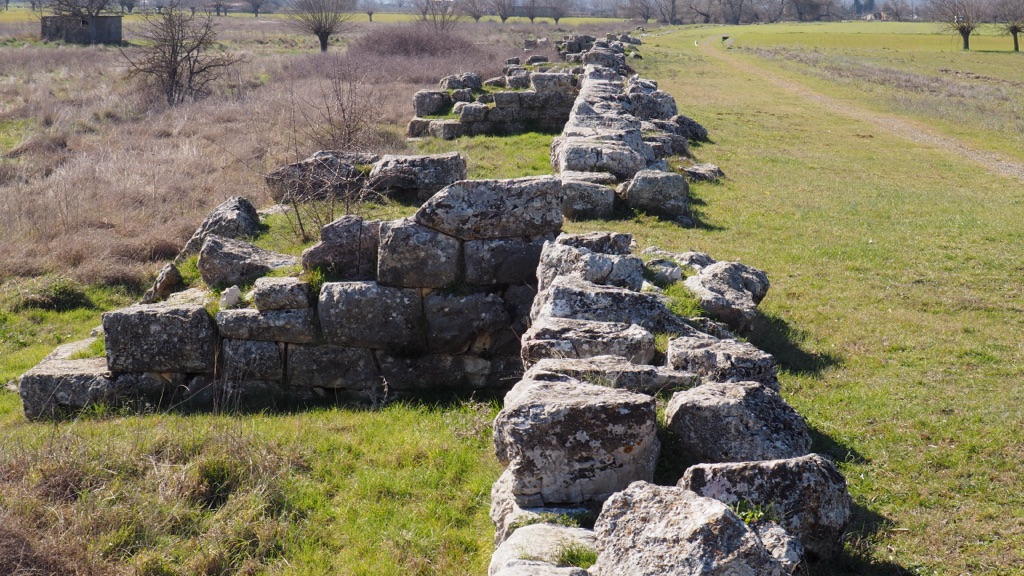Antigonea, once a flourishing ancient city, now lies in ruins in modern-day Albania. Founded by King Pyrrhus of Epirus in the 3rd century BC, it was named after his wife, Antigone. The city was a testament to Hellenistic urban planning and architecture, strategically positioned to control the route between Epirus and the plain of Ioannina. It thrived until the Roman conquest but was eventually abandoned, leaving behind a legacy etched in stone and history.
Get your dose of History via Email
Historical Background of Antigonea
Archaeologists discovered Antigonea’s ruins in the 20th century. The city’s founder, King Pyrrhus, was a formidable figure in ancient history, known for his conflicts with Rome. Antigonea served as a symbol of his power and a bastion for his kingdom. After Pyrrhus’s death, the city continued to prosper until the Romans razed it in 167 BC. Despite this, it remained inhabited until the 6th century AD, when it was finally abandoned.
The city’s discovery was a significant archaeological event. It provided insights into Hellenistic urban planning and architecture. The site was unearthed by a team led by Professor Dhimiter Condi in 1964, revealing a city with a well-defined street grid, public buildings, and a theater. These findings have helped historians piece together the city’s past and its role in the region.
Antigonea was built with grandeur in mind. Its construction reflected the Hellenistic style, with large blocks of stone forming the city walls and buildings. The city was designed to showcase the power and wealth of its founder. Over time, it attracted a diverse population, becoming a melting pot of cultures in ancient Epirus.
Throughout its history, Antigonea witnessed several significant events. It was the scene of battles and political intrigue. The city’s strategic location made it a prize for conquering armies. Its fall to the Romans marked the end of an era for Epirus and the beginning of Roman dominance in the region.
After the Roman conquest, Antigonea experienced a period of decline. However, it was not completely forgotten. The city was later inhabited during the Byzantine period. This era saw the construction of new buildings and the repurposing of older structures. The city’s final abandonment in the 6th century AD marked the end of its long history.
About Antigonea
Antigonea’s ruins provide a window into ancient urban design. The city’s layout was typical of Hellenistic planning, with a grid pattern of streets intersecting at right angles. This design facilitated the flow of people and goods, reflecting the city’s importance as a trade hub.
The city’s architecture was impressive. Large stone blocks formed the defensive walls, which were up to 3 meters thick. Public buildings, such as the agora, the theater, and temples, were constructed with careful attention to detail. These structures were not only functional but also served as symbols of the city’s prosperity.
One of the most notable features of Antigonea was its theater. Built to accommodate thousands of spectators, it was a focal point for cultural life. The theater’s design and acoustics were advanced for its time, showcasing the sophistication of Hellenistic architecture.
Residential areas in Antigonea were well-organized. Houses were built with stone foundations and mud-brick superstructures. Some residences were quite elaborate, indicating the wealth of their inhabitants. These homes often included courtyards and private wells.
The city’s construction methods were advanced for the period. Builders used a combination of local limestone and other materials. They employed techniques that ensured the structures’ durability, many of which have withstood the test of time.
Theories and Interpretations
Antigonea has been the subject of various theories and interpretations. Its purpose, beyond being a symbol of Pyrrhus’s power, is still debated. Some suggest it was a center for trade, while others believe it was primarily a military stronghold.
The city’s sudden abandonment raises questions. Historians have proposed several theories, including economic decline, natural disasters, or military defeats. Each theory attempts to explain why a once-thriving city fell into ruin.
Matching Antigonea’s ruins to historical records has been challenging. The city’s name appears in ancient texts, but descriptions are often vague. Archaeologists have had to rely on the physical evidence to piece together its story.
Dating the ruins has involved various methods. These include stratigraphy, pottery analysis, and inscriptions. These techniques have helped establish a timeline for the city’s occupation and decline.
Despite the mysteries surrounding Antigonea, its significance is undeniable. It provides a glimpse into the past and the complexities of ancient civilizations. The city’s ruins continue to be a focus for research and interpretation.
At a glance
Country: Albania
Civilization: Hellenistic Epirus
Age: Founded in the 3rd century BC, abandoned in the 6th century AD
Conclusion and Sources
Reputable sources used in creating this article:

